Recently nominated for awards in public, heritage and sustainable architecture, this milestone project marks the start of a new era for one of Sydney’s most renowned sites.

April 17th, 2023
As a prominent piece of architecture in a prominent location, the revitalisation of Bondi Pavilion by Tonkin Zulaikha Greer created no shortage of local attention. The public nature of the project – spanning three different mayors and two elections for the client, Waverley Council – added layers of complexity as well as placing a genuine emphasis on community connections.
Over the course of seven years, the brief evolved: “The change to be more community focused was something that we really welcomed. It also put a lot of pressure on the building because we had to fit a lot of new stuff in as well as the existing parts,” explains TZG director, Peter Tonkin.

“The restoration helped because the building is such a major part of Bondi Beach. By taking away some of the additions that have been made over time, it’s now more recognisable and unified in its design,” says Wolfgang Ripberger, project director at TZG.
Heritage work such as this or the widely acclaimed Walsh Bay Arts Precinct by TZG requires a delicate balance. On one hand, sensitivity and integrity in conserving the historic fabric of a building; on the other, finding ways to adapt and open it up to new uses. At Bondi, this has been achieved by positioning the site as a gateway to the beach, a move that enhances the building by taking advantage of its pre-existing location and layout.

The emphasis on permeability is a clear example of the multilayered approach demanded by heritage work. The architects have made new use of an existing space – the open courtyard at the heart of the pavilion – by interpreting it in relation to contemporary needs. “That was fundamentally the problem: the original use of the courtyards as changing sheds made it very private and blocked off views,” says Ripberger.
As Tonkin explains, “you keep the physical fabric but change the way that the space is used.” The architectural language becomes one of opening up and facilitating public access rather than closing or cutting off; it is, in short, about becoming a welcoming, connecting space. The result is a restoration of exactly what this iconic site deserves – a gateway connecting the beach with the streets to the north to create a “new beach journey”.
Related: The fire-ravaged puzzle of Parramatta Park


The ability to make such nuanced heritage interventions goes back to the start of the design process. TZG’s work was painstaking in terms of both analysis – “we mapped every crack,” notes Tonkin – and research. The latter involved no small amount of archival detective work and its results can be seen in what is perhaps the most visually pleasing part of the restoration, the roof tiles.
By poring over black-and-white archival photographs, the architects were able to re-establish the original roof aesthetic with its distinctive use of individually coloured tiles amidst the overall warm red tone. Again, this intervention captures something of the enigma of heritage architecture in its demands for simplicity and restraint at the very same time as creativity and reinterpretation.

From conservation of existing structure – including the odd surprise such as the discovery of well-preserved painted murals – to redesign of its usage and community purpose, Bondi Pavilion embodies change across all scales to create a venue that will also host hospitality spaces.
“A lot of handsome spaces and all we had to do was get rid of some of the rubbish and make it look good again,” says Tonkin. The architects might describe it with such modesty but it is no less than the balancing of new and old. “That’s the fun bit,” adds Ripberger. “Everything there is unique.”
Tonkin Zulaikha Greer
tzg.com.au
JMD Design (landscape architects)
jmddesign.com.au
Photography
Brett Boardman






We think you might also like this story on the Sydney Football Stadium.
INDESIGN is on instagram
Follow @indesignlive
A searchable and comprehensive guide for specifying leading products and their suppliers
Keep up to date with the latest and greatest from our industry BFF's!

For those who appreciate form as much as function, Gaggenau’s latest induction innovation delivers sculpted precision and effortless flexibility, disappearing seamlessly into the surface when not in use.
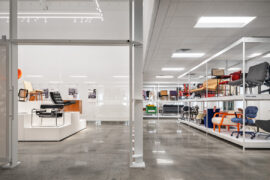
The undeniable thread connecting Herman Miller and Knoll’s design legacies across the decades now finds its profound physical embodiment at MillerKnoll’s new Design Yard Archives.
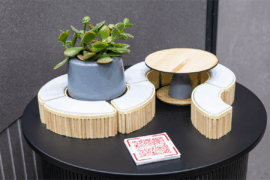
From the spark of an idea on the page to the launch of new pieces in a showroom is a journey every aspiring industrial and furnishing designer imagines making.

London-based design duo Raw Edges have joined forces with Established & Sons and Tongue & Groove to introduce Wall to Wall – a hand-stained, “living collection” that transforms parquet flooring into a canvas of colour, pattern, and possibility.
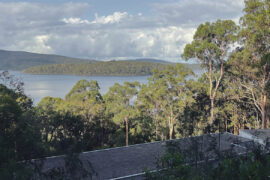
With projects shortlisted for Habitus House of the Year 2025, Anthony Gill and Jason Gibney join the podcast to discuss the state of housing in Australia today.
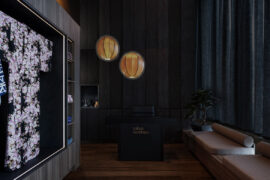
Making a splash on the hair spa scene, the latest project from X + O makes a little slice of Japan right at home in suburban Melbourne.
The internet never sleeps! Here's the stuff you might have missed
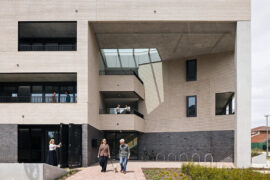
Brett Ward, General Manager of Marketing at Brickworks, tells us how modern approaches to sustainability are intersecting with the long history of the brick.

The Australian Institute of Architects has unveiled 43 projects representing the pinnacle of contemporary design, with winners addressing housing, climate and affordability crises through innovative solutions.